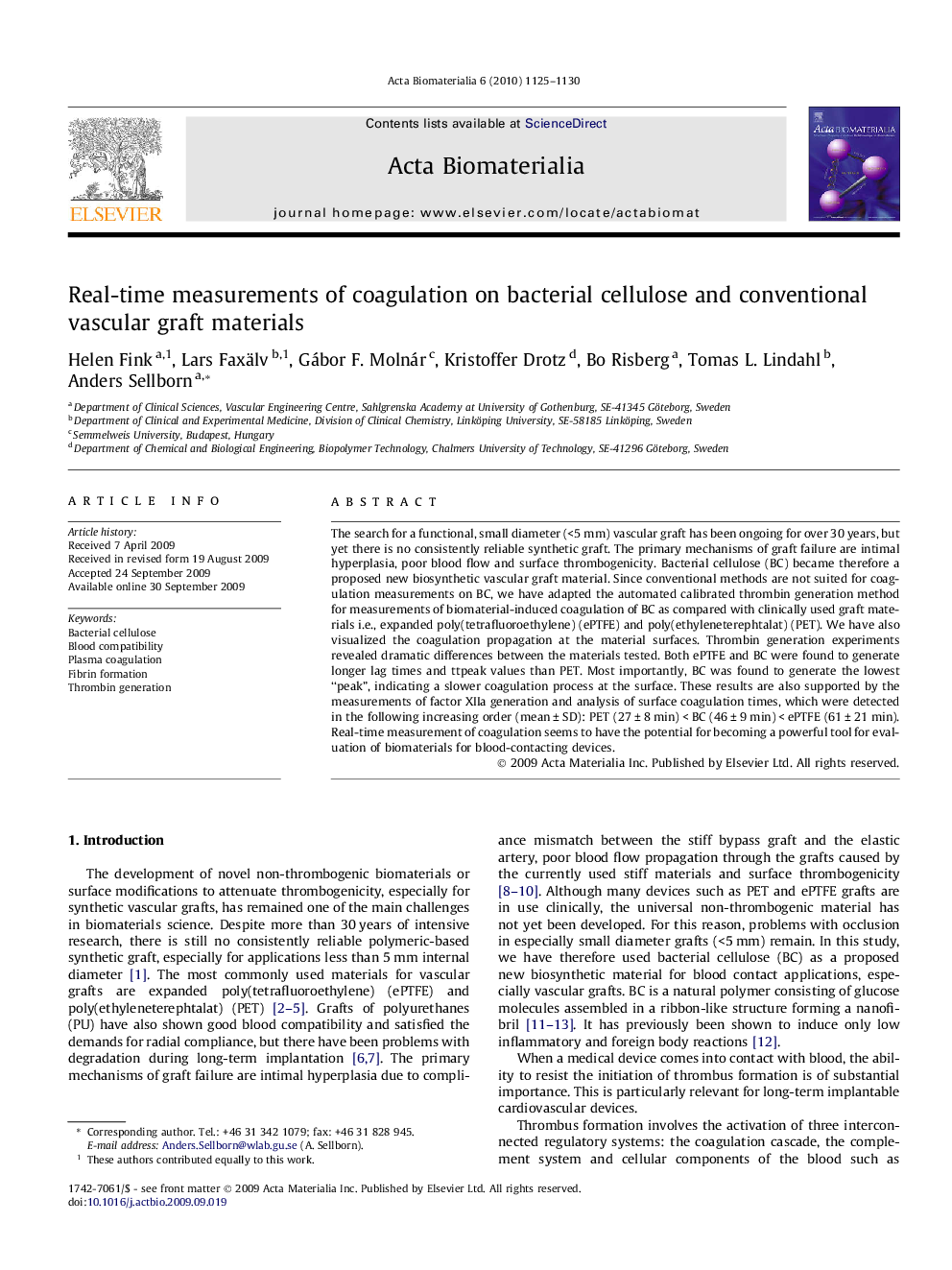| Article ID | Journal | Published Year | Pages | File Type |
|---|---|---|---|---|
| 1687 | Acta Biomaterialia | 2010 | 6 Pages |
The search for a functional, small diameter (<5 mm) vascular graft has been ongoing for over 30 years, but yet there is no consistently reliable synthetic graft. The primary mechanisms of graft failure are intimal hyperplasia, poor blood flow and surface thrombogenicity. Bacterial cellulose (BC) became therefore a proposed new biosynthetic vascular graft material. Since conventional methods are not suited for coagulation measurements on BC, we have adapted the automated calibrated thrombin generation method for measurements of biomaterial-induced coagulation of BC as compared with clinically used graft materials i.e., expanded poly(tetrafluoroethylene) (ePTFE) and poly(ethyleneterephtalat) (PET). We have also visualized the coagulation propagation at the material surfaces. Thrombin generation experiments revealed dramatic differences between the materials tested. Both ePTFE and BC were found to generate longer lag times and ttpeak values than PET. Most importantly, BC was found to generate the lowest “peak”, indicating a slower coagulation process at the surface. These results are also supported by the measurements of factor XIIa generation and analysis of surface coagulation times, which were detected in the following increasing order (mean ± SD): PET (27 ± 8 min) < BC (46 ± 9 min) < ePTFE (61 ± 21 min). Real-time measurement of coagulation seems to have the potential for becoming a powerful tool for evaluation of biomaterials for blood-contacting devices.
